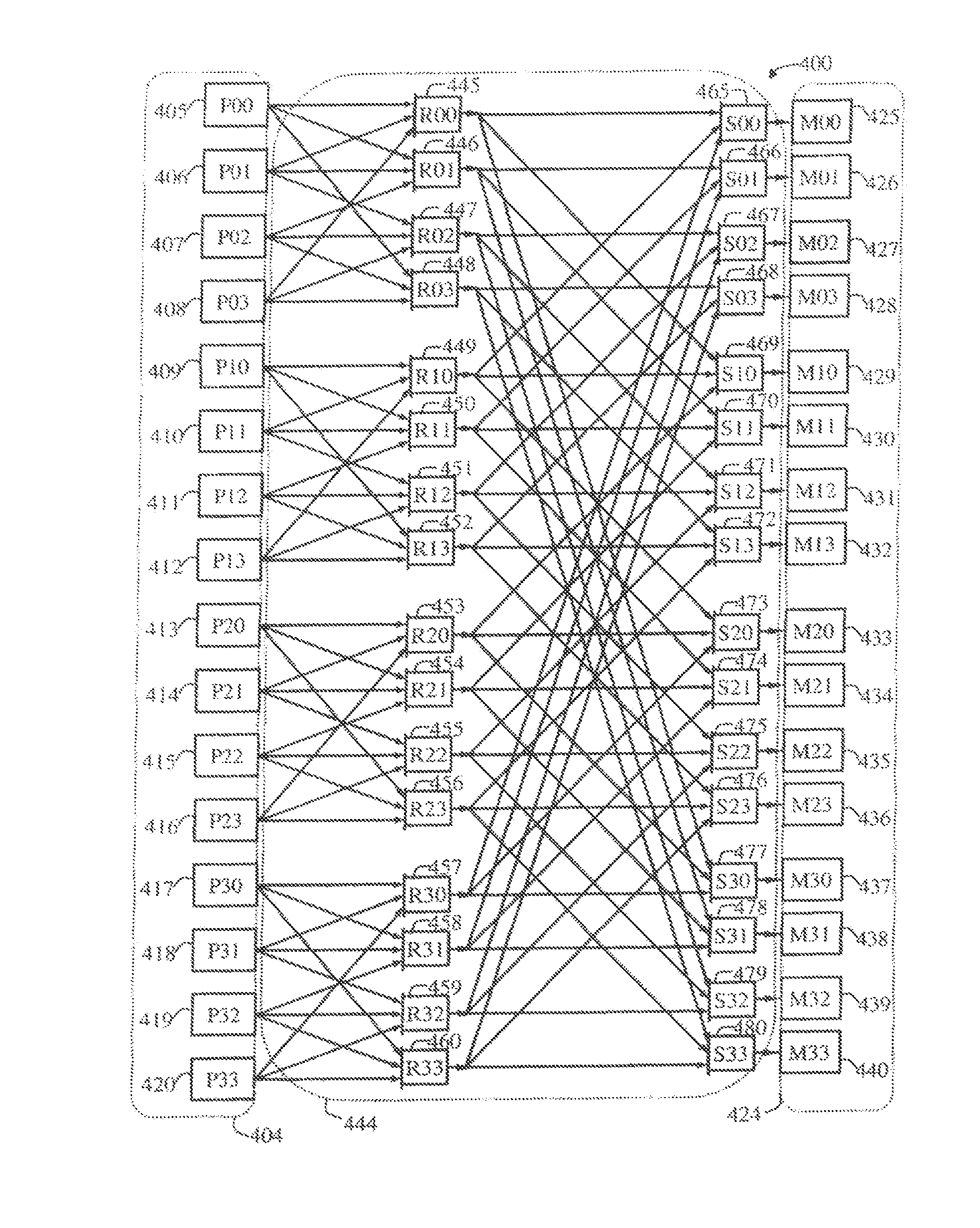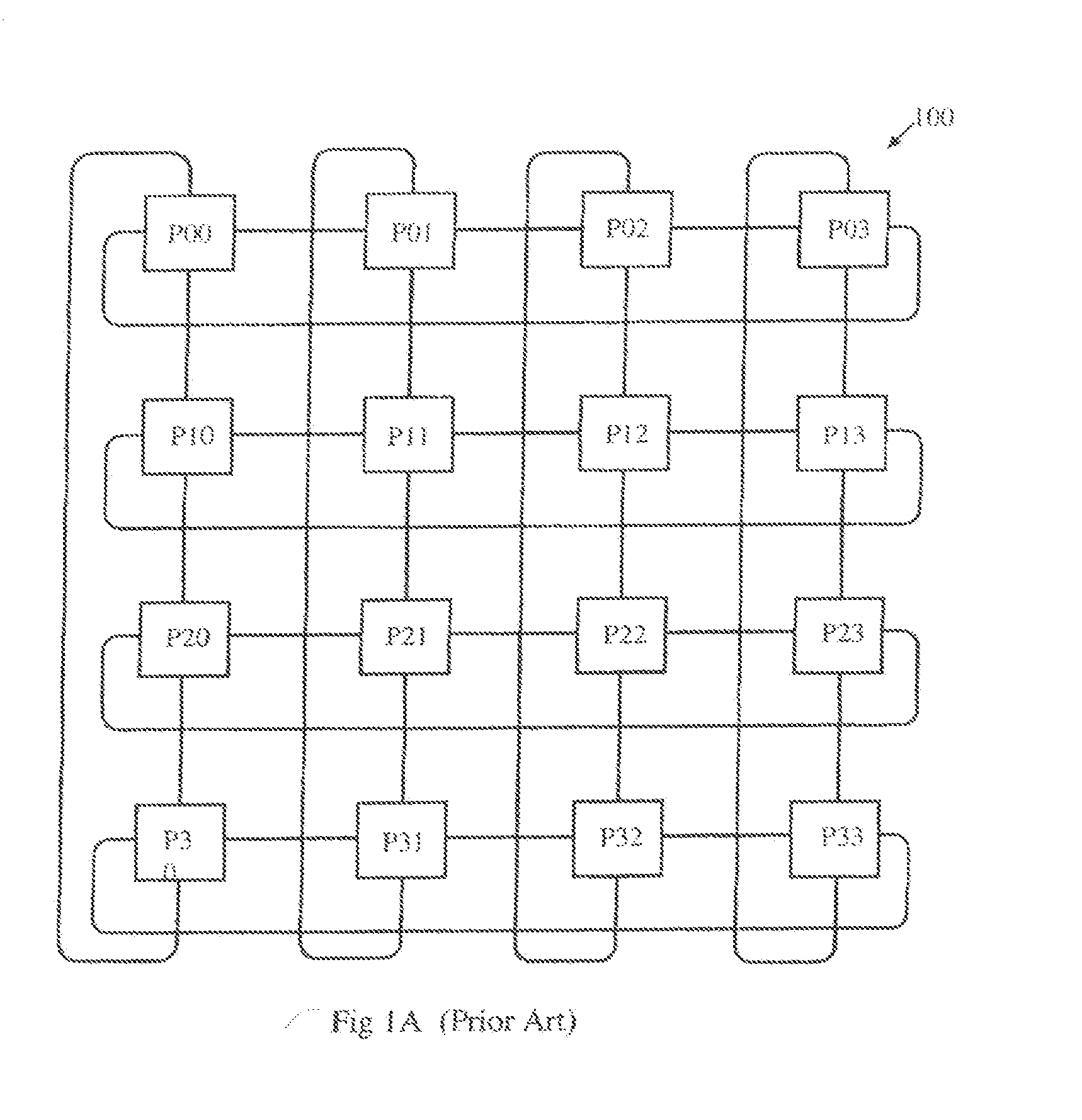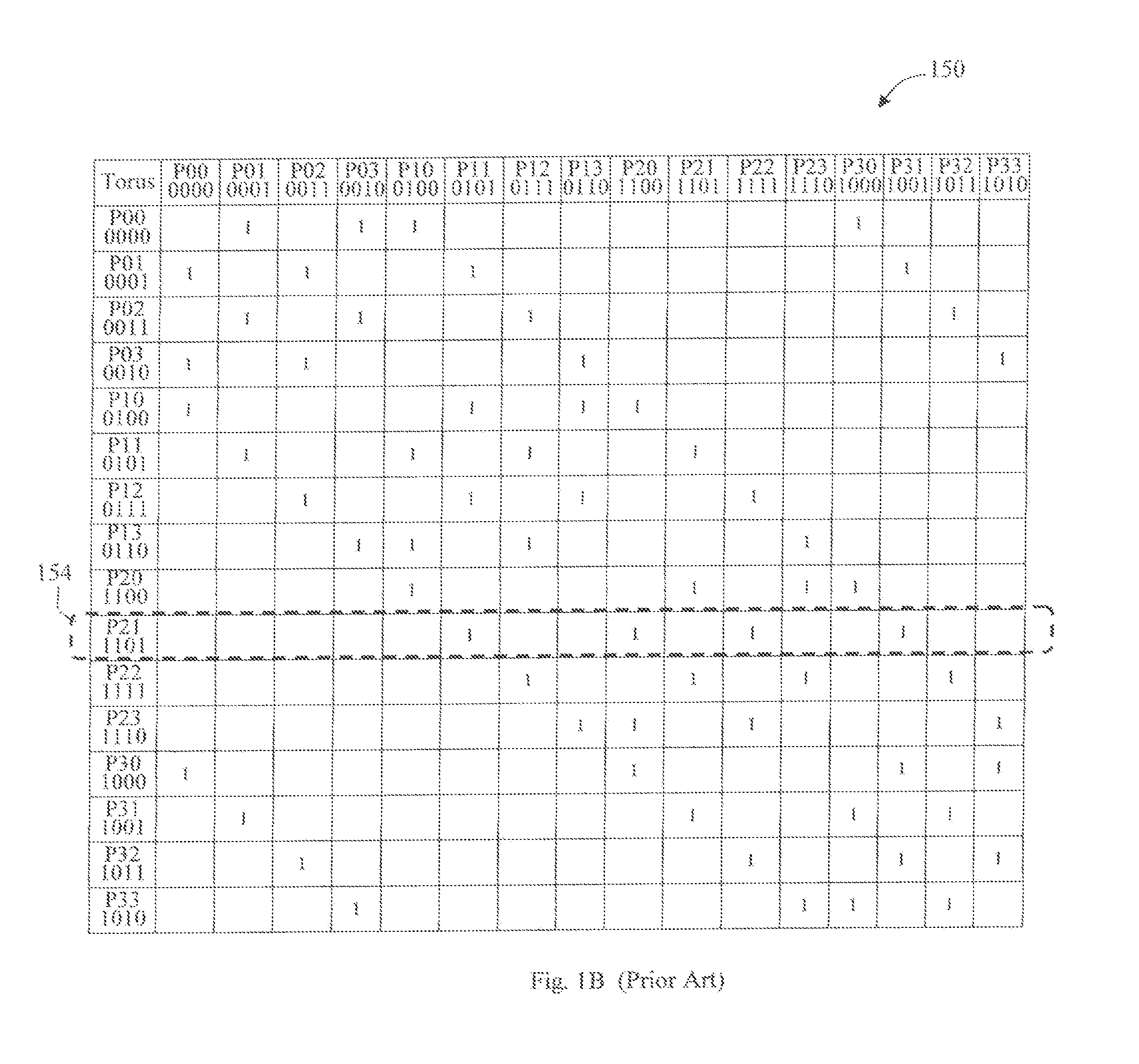Interconnection network connecting operation-configurable nodes according to one or more levels of adjacency in multiple dimensions of communication in a multi-processor and a neural processor
- Summary
- Abstract
- Description
- Claims
- Application Information
AI Technical Summary
Benefits of technology
Problems solved by technology
Method used
Image
Examples
Embodiment Construction
[0068]FIG. 4A illustrates a Wings array memory (WAM) sixteen processor (16) (WAM16S) network 400 for store (S) operations. A processor array 404 of sixteen processors 405-420 are illustrated as nodes that each can initiate a store operation to store data in a memory location in the Wings array memory (WAM) 424 consisting of sixteen memory blocks 425-440. The processor and memory block nodes are organized in linear arrays and identified according to a G×H matrix where, in this example, G equals four representing the number of rows in the matrix and H equals four representing the number of columns. A processor Pg,h, a memory block Mg,h, and internal nodes of the network are labeled in a row g by column h format where gε{0, 1, . . . , G−1} and hε{0, 1, . . . , H−1}. The processors are not directly connected to each other nor are the memory blocks directly connected to any or the other memory blocks.
[0069]A two stage WAM network 444 interconnects the processors 405-420 and memory blocks...
PUM
 Login to View More
Login to View More Abstract
Description
Claims
Application Information
 Login to View More
Login to View More - R&D
- Intellectual Property
- Life Sciences
- Materials
- Tech Scout
- Unparalleled Data Quality
- Higher Quality Content
- 60% Fewer Hallucinations
Browse by: Latest US Patents, China's latest patents, Technical Efficacy Thesaurus, Application Domain, Technology Topic, Popular Technical Reports.
© 2025 PatSnap. All rights reserved.Legal|Privacy policy|Modern Slavery Act Transparency Statement|Sitemap|About US| Contact US: help@patsnap.com



